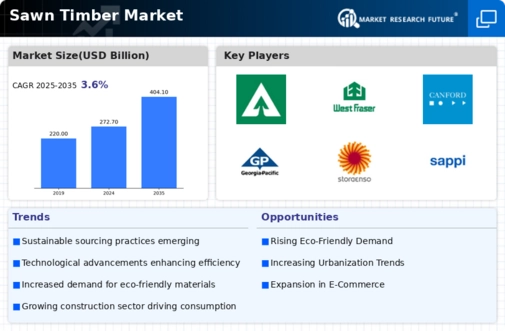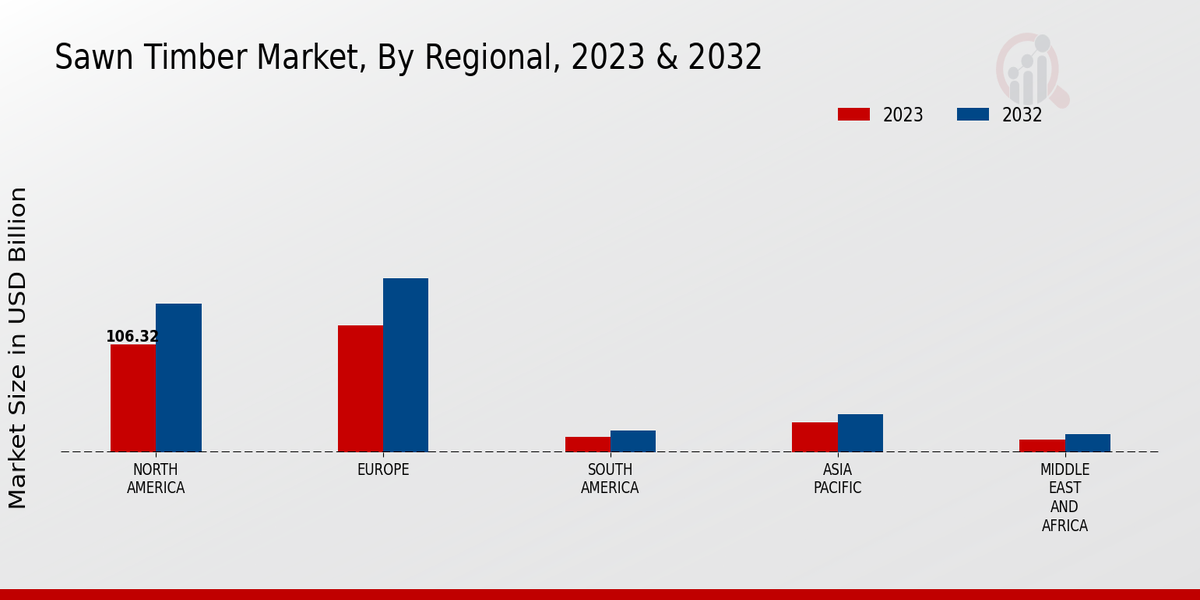Major players in the Sawn Timber Market industry are responding to the growing demand for sustainable forestry practices by investing in reforestation and forest management programs. Leading Sawn Timber Market players are also implementing new technologies to improve efficiency and reduce environmental impact. The Sawn Timber Market development is being driven by a number of factors, including increasing population, rising incomes, and growing urbanization. The Competitive Landscape of Sawn Timber Market is expected to remain competitive, with a number of key players vying for market share.Leading Sawn Timber Market players include Weyerhaeuser, West Fraser, Canfor, and Georgia-Pacific.
These companies have a strong presence in key markets and are well-positioned to benefit from the growing demand for sawn timber. Weyerhaeuser is one of the largest producers of sawn timber in the world, with operations in North America, Europe, and Asia. The company is focused on sustainable forestry practices and has a number of initiatives in place to reduce its environmental impact. West Fraser is a leading producer of softwood lumber in North America. The company has a strong focus on innovation and is constantly developing new products and processes to meet the needs of its customers.
Canfor is a producer of sustainable forest products, including sawn timber, pulp, and paper. The company has a strong commitment to sustainable forestry and is working to reduce its environmental impact. Georgia-Pacific is a leading manufacturer of building products, including sawn timber, plywood, and OSB. The company has a strong focus on customer service and is committed to providing high-quality products.One of the major competitors in the Sawn Timber Market is Stora Enso. The company is headquartered in Finland and has operations in over 30 countries. Stora Enso is a leading producer of pulp, paper, and sawn timber.
The company has a strong focus on sustainability and is committed to reducing its environmental impact. Stora Enso is well-positioned to benefit from the growing demand for sawn timber, particularly in emerging markets.
























Leave a Comment